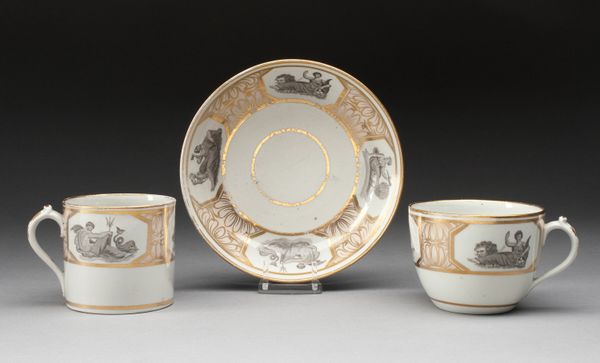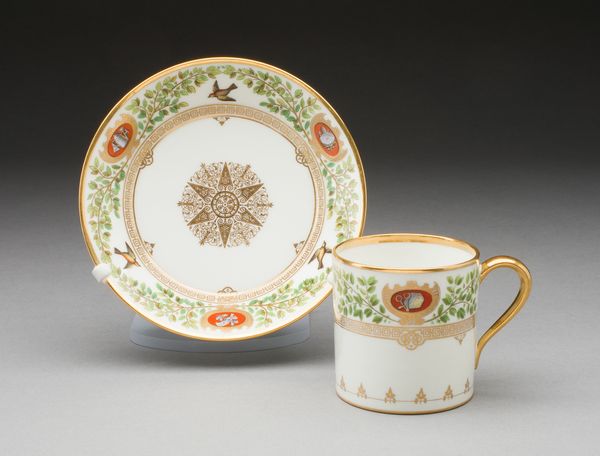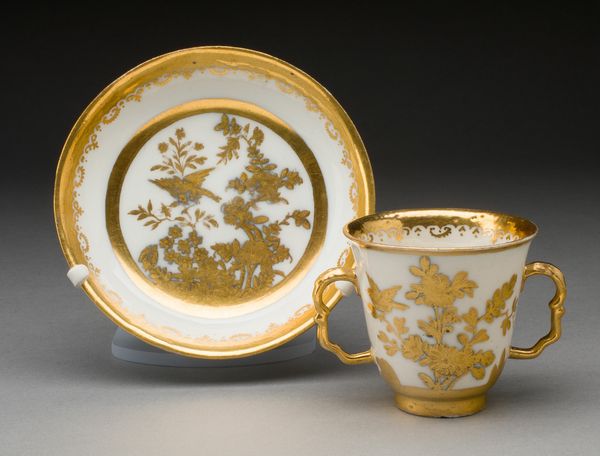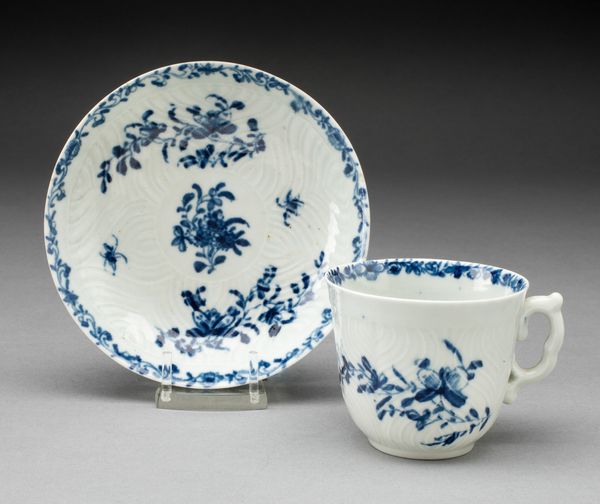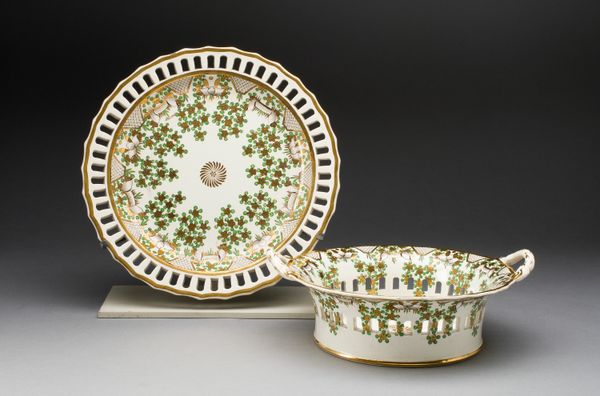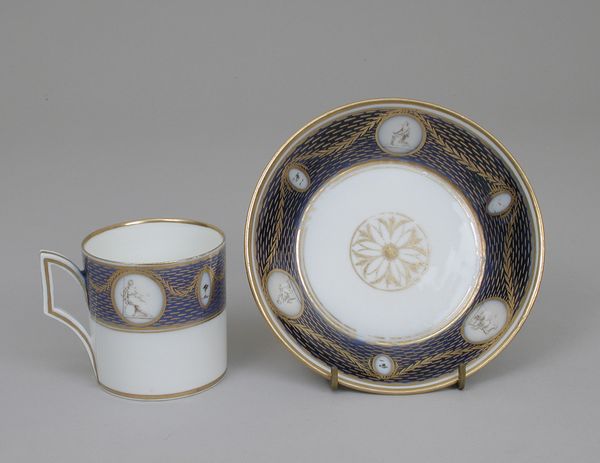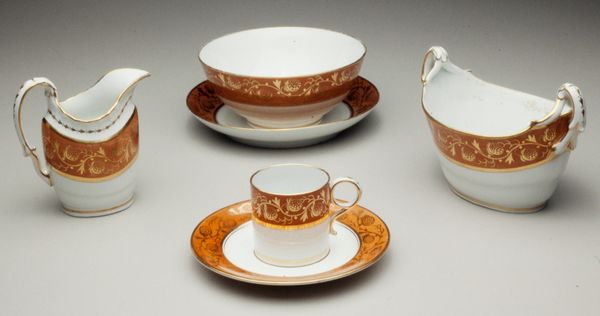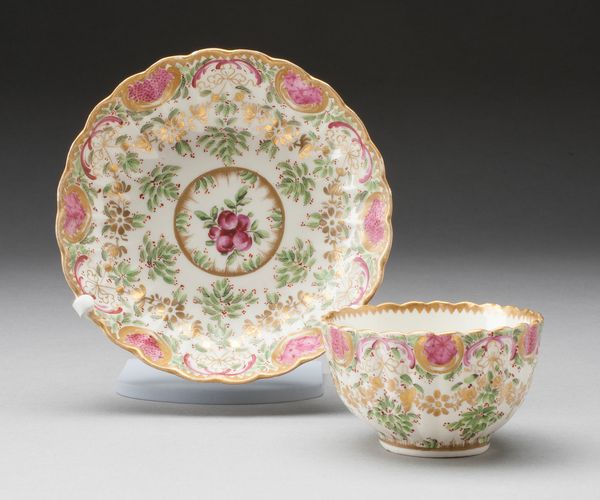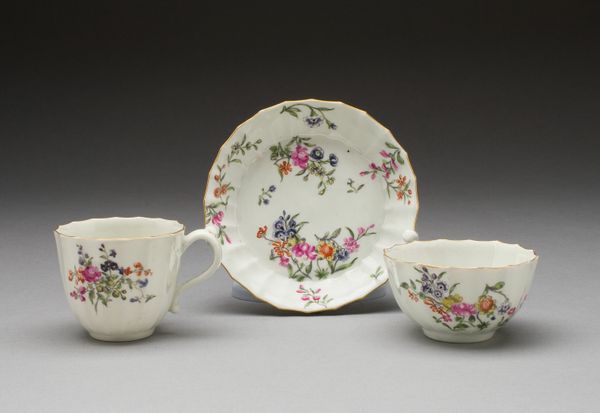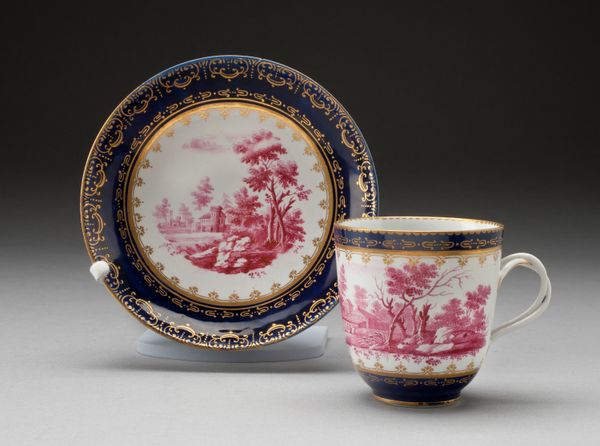
ceramic, porcelain
#
ceramic
#
porcelain
#
ceramic
#
decorative-art
#
rococo
Dimensions: 6 × 13.3 cm (2 3/8 × 5 1/4 in.)
Copyright: Public Domain
Curator: Take a look at this exquisite Cup and Saucer crafted around 1757 by the Manufacture nationale de Sèvres. What springs to mind when you first see it? Editor: Immediately, a sense of refined elegance. The porcelain’s creamy white contrasted with that gilded rococo design; it evokes images of aristocratic leisure and elaborate court rituals. But behind this aesthetic charm, what's the real story? Curator: Absolutely. This piece represents the height of French porcelain production and luxury under royal patronage. Sèvres, as an institution, influenced artistic tastes, political image and the consumption habits of the elite. This piece is porcelain, incredibly fragile. This fragility was associated with elitism, contrasting with, let's say, earthenware used among the lower classes. Editor: And how does this particular design tie into the political and social climate of the time? The swirling gold patterns speak of opulence and excess. Do they speak to any tensions given its historic context? Curator: Certainly. These cups were not merely objects of utility; they were potent symbols of status. The Rococo style, with its curves and ornamentation, mirrored the aristocracy's penchant for indulgence, potentially alienating the general population. It's difficult to separate its aesthetic value from these complex underpinnings. Editor: Precisely, and isn't it essential to critically engage with this history when displaying pieces like these? Recognizing how these "innocent" objects reflect social disparities. Curator: No doubt. Presenting pieces within the context of colonialism, gender inequality and class division fosters a nuanced understanding of art's role in shaping our world. These objects prompt vital discussions around cultural representation and historical narratives. Editor: It's clear, therefore, that this seemingly harmless cup and saucer isn't simply an artifact. It's a portal through which we can explore socio-political realities of 18th century France, its royal ambitions and perhaps the cost of that luxury on broader populations. Curator: Indeed. Viewing it in such a context empowers visitors to draw relevant conclusions about historical patterns.
Comments
No comments
Be the first to comment and join the conversation on the ultimate creative platform.
